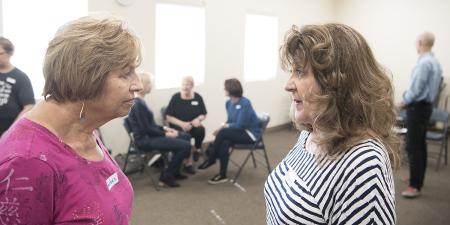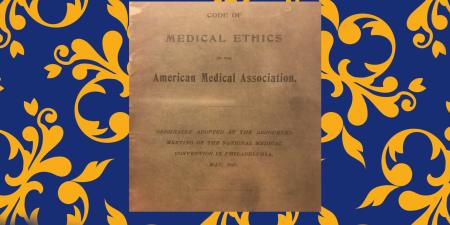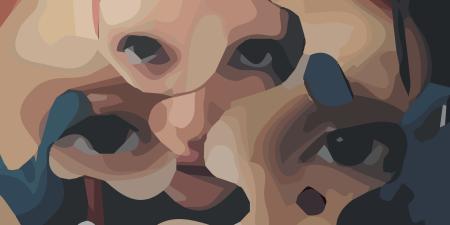Innovation as a concept and practice has circulated widely over the last several decades across entrepreneurial and business sectors and, most recently, academia. In the health care marketplace, innovation-related “incubators” and “hubs” have sprouted up as ways to create the next generation of clinical entrepreneurs and increase students’ exposure to new technologies.1 Universities and medical schools have responded by creating bench-to-bedside translational medicine institutes, innovation centers, and entrepreneurial think tanks. At the same time, over the last 20 years, the interprofessional practice and education (IPE) movement has gained enormous traction in health education as a core philosophy and set of competencies that are required for virtually all accredited allied and professional health and social care programs.2 This shift has led to the development of medical education research centers3 and institutes for IPE on myriad campuses.4,5 The institutional growth of IPE, however, has not necessarily aligned with the growth of new technologies and health innovations in the health care marketplace. In fact, the IPE literature has called for innovation in training that bridges the gap between education and practice as learners begin to interact with patients and clinicians in the marketplace.6,7
This special issue, “IPE and Innovation,” took shape by the authors stepping back and thinking about this intersection and finding effective and fruitful examples of how IPE affects learners and their professionalization and socialization during training. This issue is less about IPE assessment and measurement of outcomes and more about humanistic, qualitative, and sociocultural examples of novel IPE today. Our experiences working together to build IPE programming for hundreds of students in multiple professions has also contributed to our collaborative philosophy that sometimes less is more when it comes to innovative IPE. Innovations can be low tech and simple and must start with basic questions: How can we create IPE programming and co-curricular experiences that compel a pharmacy student to ask a medical student an important question about patient care? How can we make students comfortable with handling conflict between themselves and others on a care team (knowing that students tend to shy away from any kind of conflict during IPE programming)? How can we create safe (eg, trauma-informed) spaces for effective IPE collaborations? Can we create lower-stakes patient interaction experiences that are perhaps more ethnographic than clinical? How do we create student-driven and meaningful IPE experiences that learners are increasingly calling for?
This issue brings together a diverse set of examples that integrate IPE with medical improv, focused ethnography, art criticism, and global clinical rotations. These examples and others enhance our understanding of what IPE can be for students and clinicians moving forward as they work to ultimately improve patient outcomes. Several contributions are collaborations with students, who continue to innovate and advance IPE by addressing contemporary societal issues, such as health equity, diversity, and antiracism, as well as refugee health and social care.
All learners (and here we are thinking of all life-long learners in the health and social care professions) remain the key drivers of effective and innovative IPE. For example, the second author (E.C.) has created opportunities for students to critique and plan IPE events through a “teaching test kitchen” model. Providing learners with opportunities to review and have a stake in IPE programming has proven highly productive. We found through our collaborative IPE work together that students quickly initiated—and advocated to reboot—programming to reflect issues related to the COVID-19 pandemic and health equity. We have also brought student learners to the table by designating IPE student reps who connect back with their cohorts. For example, physician assistant students at the institution of the first author (M.O.) decided to initiate a nontraditional IPE experience by ethnographically observing how mental health court teams create a client-centered approach to caring for mentally ill offenders while keeping them out of jail.8 These students are using the hours spent on observation to complete their requirements for an interprofessional education graduate certificate.
Of course, faculty and clinicians play a key role in supporting and facilitating IPE programming and infrastructure, and capturing their creativity and ideas is critically important. After 3 years of virtual IPE programming, we have learned some of the benefits of moving to Zoom (or other platforms). We have been able to secure more facilitator hours because of the ease of hopping on Zoom wherever one happens to be. We have also been able to secure important experts for our IPE programming to conduct online sessions with mini-lectures on trauma-informed care because of the ease of virtual platforms. After a busy day of trauma surgery, it’s easier to log onto a laptop and speak to 300-plus students than to get in a car, fight traffic, and make it to a live event. We also have met the demands of faculty who needed to learn to use these virtual platforms and other technologies of collaboration (eg, Allo, Padlet, and Zoom Whiteboard) through faculty training. These somewhat simple innovations came out of necessity and proved highly effective and efficient and have staying power.
IPE also presents challenges—Zoom fatigue, constant logistical planning, meeting accreditation standards across multiple programs, bringing learners together for collaboration during clinical rotations, and so on. Nevertheless, what remains exciting about IPE is that, as a movement, it continues to advance and reinvent itself through innovation.9
We hope readers of this special issue will be motivated by the examples provided to incorporate, alter, and advance their own versions of IPE in both educational and clinical domains. The more we advocate for IPE and prepare students for collaborative work, the quicker we can close the gap and align the marketplace with the culture and practices of interprofessionalism that are part of training. Making these changes within the workplace is gathering generational momentum. IPE remains an unfinished project with an open-endedness that fuels creativity, innovation, and meaningful lifelong learning.
References
- Linderman SW, Appukutty AJ, Russo MV, Shah AP, Javaherian K. Advancing healthcare technology education and innovation in academia. Nat Biotechnol. 2020;38(10):1213-1217.
-
Interprofessional Education Collaborative. Core competencies for interprofessional collaborative practice: 2016 update. Interprofessional Education Collaborative; 2016. Accessed June 21, 2022. https://ipec.memberclicks.net/assets/2016-Update.pdf
-
Robert D. and Patricia E. Kern Institute for the Transformation of Medical Education. Medical College of Wisconsin. Accessed June 21, 2022. https://www.mcw.edu/departments/kern-institute
-
DeWitt C. Baldwin Institute for Interprofessional Education. Rosalind Franklin University of Medicine and Science. Accessed June 21, 2022. https://www.rosalindfranklin.edu/academics/interprofessional-institute/
-
Interprofessional education. Concordia University Wisconsin. Accessed June 30, 2022. https://www.cuw.edu/academics/services/student-academic-resources/interprofessional-education/index.html#:~:text=Interprofessional%20Education%20(IPE)%20at%20CUW,to%20learn%20and%20train%20together
-
Barzansky B, Borasky S, Wall JL, Vlasses PH. Guidance on developing quality interprofessional education for the health professions. Health Professions Accreditors Collaborative. February 1, 2019. Accessed November 29, 2022. https://healthprofessionsaccreditors.org/wp-content/uploads/2019/02/HPACGuidance02-01-19.pdf
- Cox M, Cuff P, Brandt B, Reeves S, Zierler B. Measuring the impact of interprofessional education on collaborative practice and patient outcomes. J Interprof Care. 2016;30(1):1-3.
- DeJongh B, Oldani M. Case reports of interprofessional care for clients enrolled in a mental health court. Ment Health Clin. 2018;8(6):317-321.
- Singh S, McKenzie N, Knippen KL. Challenges and innovations in interprofessional education: promoting a public health perspective. J Interprof Care. 2019;33(2):270-272.



